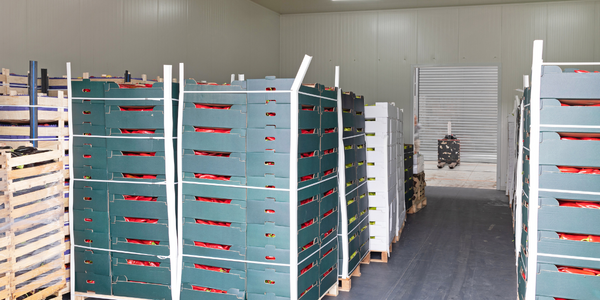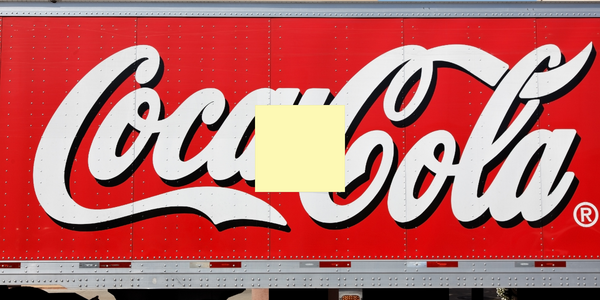Customer Company Size
Large Corporate
Region
- Europe
Country
- United Kingdom
Product
- DocuWare
Tech Stack
- DeFacto ERP system
Implementation Scale
- Departmental Deployment
Impact Metrics
- Productivity Improvements
- Cost Savings
Technology Category
- Application Infrastructure & Middleware - Data Exchange & Integration
Applicable Industries
- Food & Beverage
Services
- System Integration
About The Customer
Smithfield Foods, based in Norwich, UK, is part of the American Smithfield Group, the largest pork processing group in the world. The company has leading private brands and numerous private label solutions, generating total annual worldwide sales of 15 billion dollars. The accounting department of Smithfield Foods receives more than 12,000 invoices each year. Prior to the introduction of the Document Management System (DMS), payment approval was completely paper-based.
The Challenge
Smithfield Foods, a large pork processing group, was struggling with a highly manual and paper-based accounting process. The company's accounting department received over 12,000 invoices annually, which were compared with open purchase orders or forwarded to the responsible manager for approval. However, the payment process only took place every 14 days, meaning approved invoices often had to be stored again. The final documents were placed in hanging files, while older documents were transferred to an external archive. Over time, the space requirements and manual processes became a burden. Different employees had to access documents – often multiple times – and then had to file them again.
The Solution
Smithfield Foods implemented DocuWare, a digital document management system (DMS), to streamline its accounting processes. Incoming invoices are sent to their electronic archive in different ways. Invoices received by email are stored directly from Outlook, while paper invoices are quickly stored after scanning. In both cases, DocuWare reads important index terms straight from the documents. The DMS then compares the invoice information with open order data to approve payment. If these match, the invoice is released; otherwise, an automated approval process begins. The DMS sends a link to the archived documents by email to the responsible managers for approval. For payment, the DMS compiles the released invoices every 14 days in a digital file that is available at the push of a button.
Operational Impact
Quantitative Benefit

Case Study missing?
Start adding your own!
Register with your work email and create a new case study profile for your business.
Related Case Studies.

Case Study
The Kellogg Company
Kellogg keeps a close eye on its trade spend, analyzing large volumes of data and running complex simulations to predict which promotional activities will be the most effective. Kellogg needed to decrease the trade spend but its traditional relational database on premises could not keep up with the pace of demand.

Case Study
HEINEKEN Uses the Cloud to Reach 10.5 Million Consumers
For 2012 campaign, the Bond promotion, it planned to launch the campaign at the same time everywhere on the planet. That created unprecedented challenges for HEINEKEN—nowhere more so than in its technology operation. The primary digital content for the campaign was a 100-megabyte movie that had to play flawlessly for millions of viewers worldwide. After all, Bond never fails. No one was going to tolerate a technology failure that might bruise his brand.Previously, HEINEKEN had supported digital media at its outsourced datacenter. But that datacenter lacked the computing resources HEINEKEN needed, and building them—especially to support peak traffic that would total millions of simultaneous hits—would have been both time-consuming and expensive. Nor would it have provided the geographic reach that HEINEKEN needed to minimize latency worldwide.

Case Study
Energy Management System at Sugar Industry
The company wanted to use the information from the system to claim under the renewable energy certificate scheme. The benefit to the company under the renewable energy certificates is Rs 75 million a year. To enable the above, an end-to-end solution for load monitoring, consumption monitoring, online data monitoring, automatic meter data acquisition which can be exported to SAP and other applications is required.

Case Study
Coca Cola Swaziland Conco Case Study
Coco Cola Swaziland, South Africa would like to find a solution that would enable the following results: - Reduce energy consumption by 20% in one year. - Formulate a series of strategic initiatives that would enlist the commitment of corporate management and create employee awareness while helping meet departmental targets and investing in tools that assist with energy management. - Formulate a series of tactical initiatives that would optimize energy usage on the shop floor. These would include charging forklifts and running cold rooms only during off-peak periods, running the dust extractors only during working hours and basing lights and air-conditioning on someone’s presence. - Increase visibility into the factory and other processes. - Enable limited, non-intrusive control functions for certain processes.

Case Study
Temperature Monitoring for Restaurant Food Storage
When it came to implementing a solution, Mr. Nesbitt had an idea of what functionality that he wanted. Although not mandated by Health Canada, Mr. Nesbitt wanted to ensure quality control issues met the highest possible standards as part of his commitment to top-of-class food services. This wish list included an easy-to use temperature-monitoring system that could provide a visible display of the temperatures of all of his refrigerators and freezers, including historical information so that he could review the performance of his equipment. It also had to provide alert notification (but email alerts and SMS text message alerts) to alert key staff in the event that a cooling system was exceeding pre-set warning limits.

Case Study
Coca-Cola Refreshments, U.S.
Coca-Cola Refreshments owns and manages Coca-Cola branded refrigerators in retail establishments. Legacy systems were used to locate equipment information by logging onto multiple servers which took up to 8 hours to update information on 30-40 units. The company had no overall visibility into equipment status or maintenance history.







